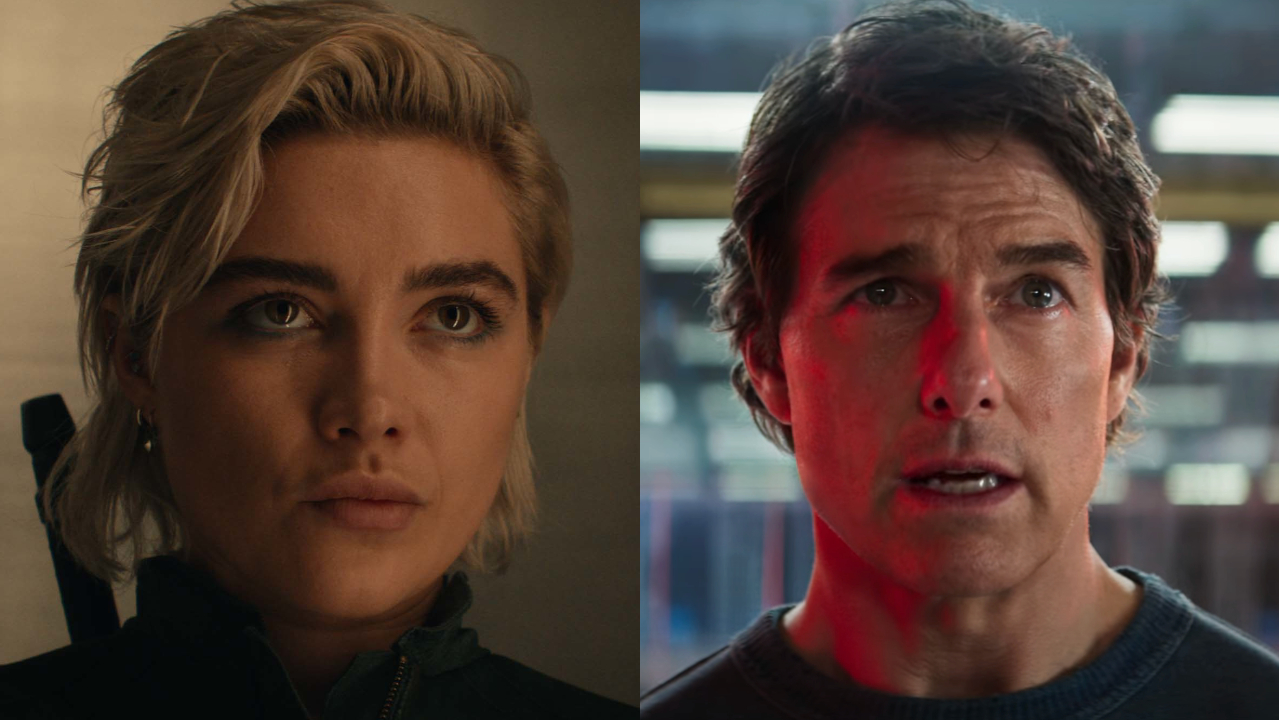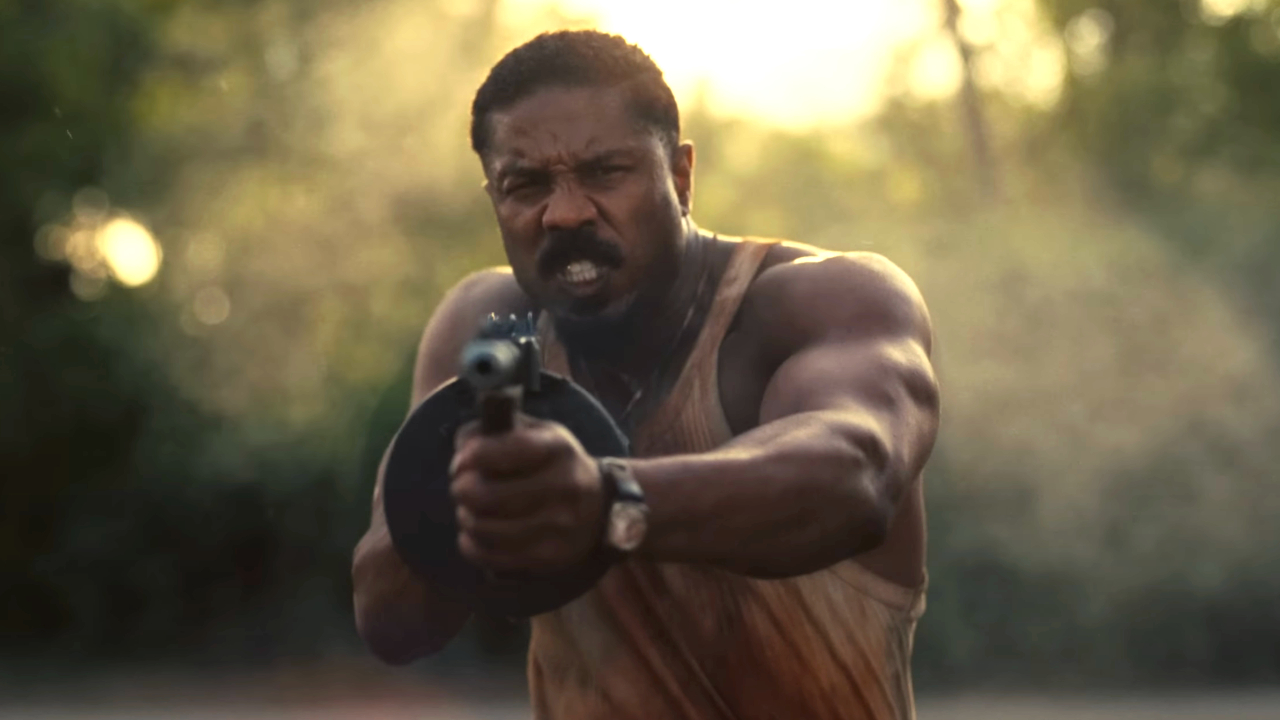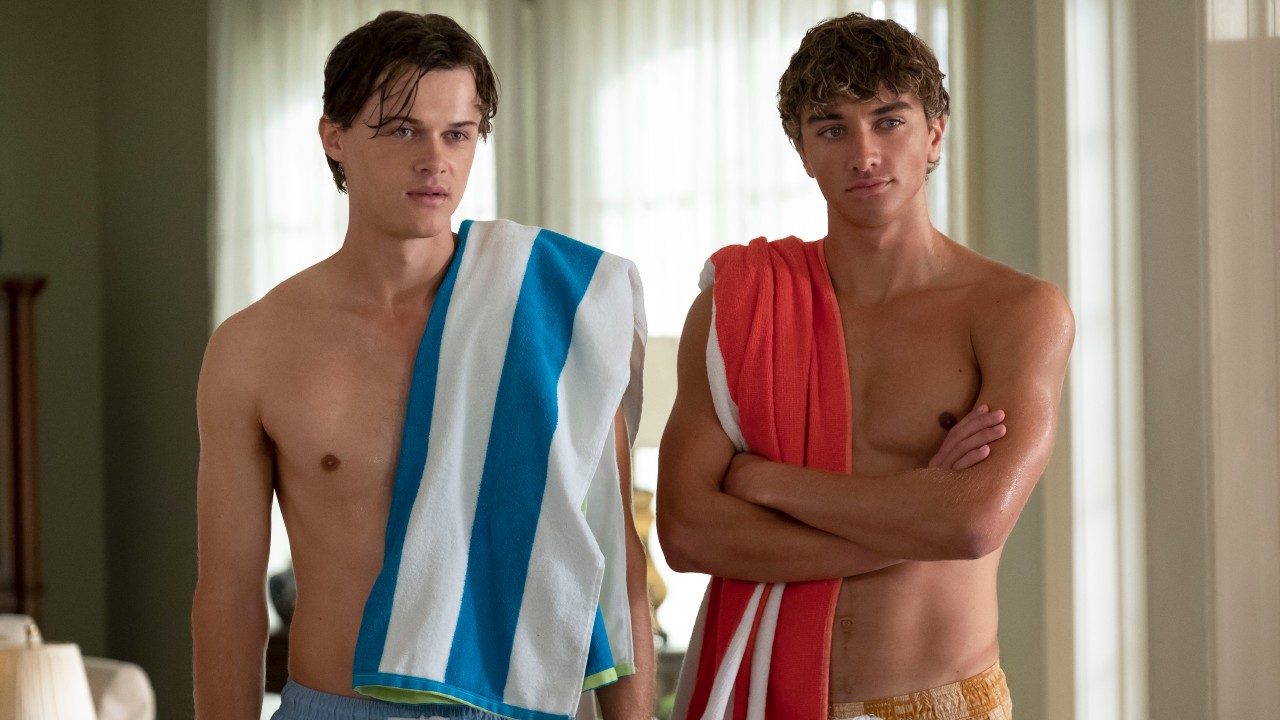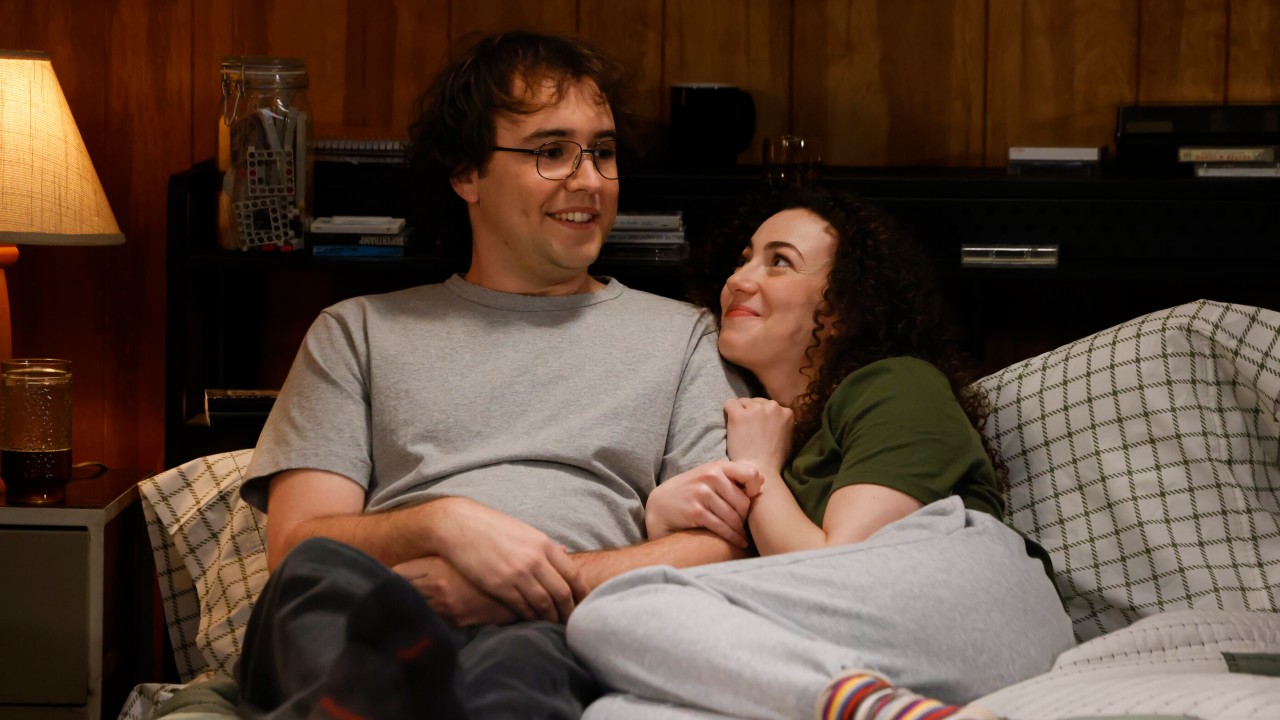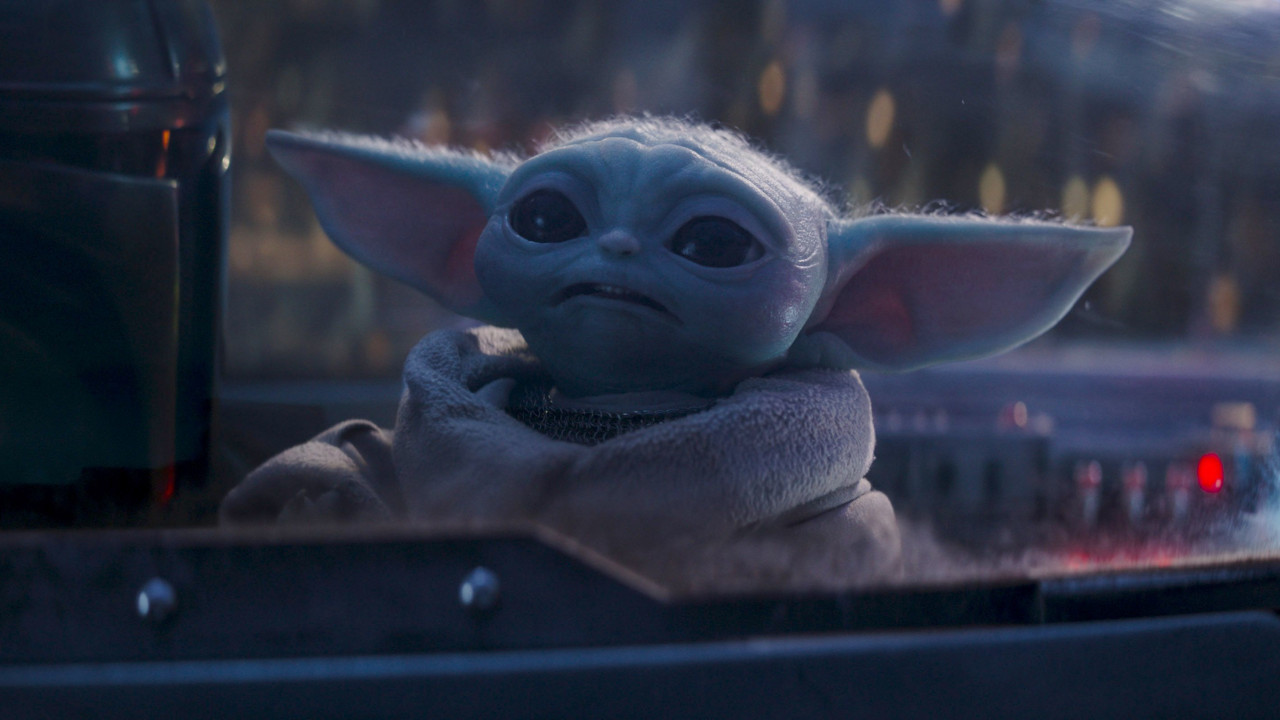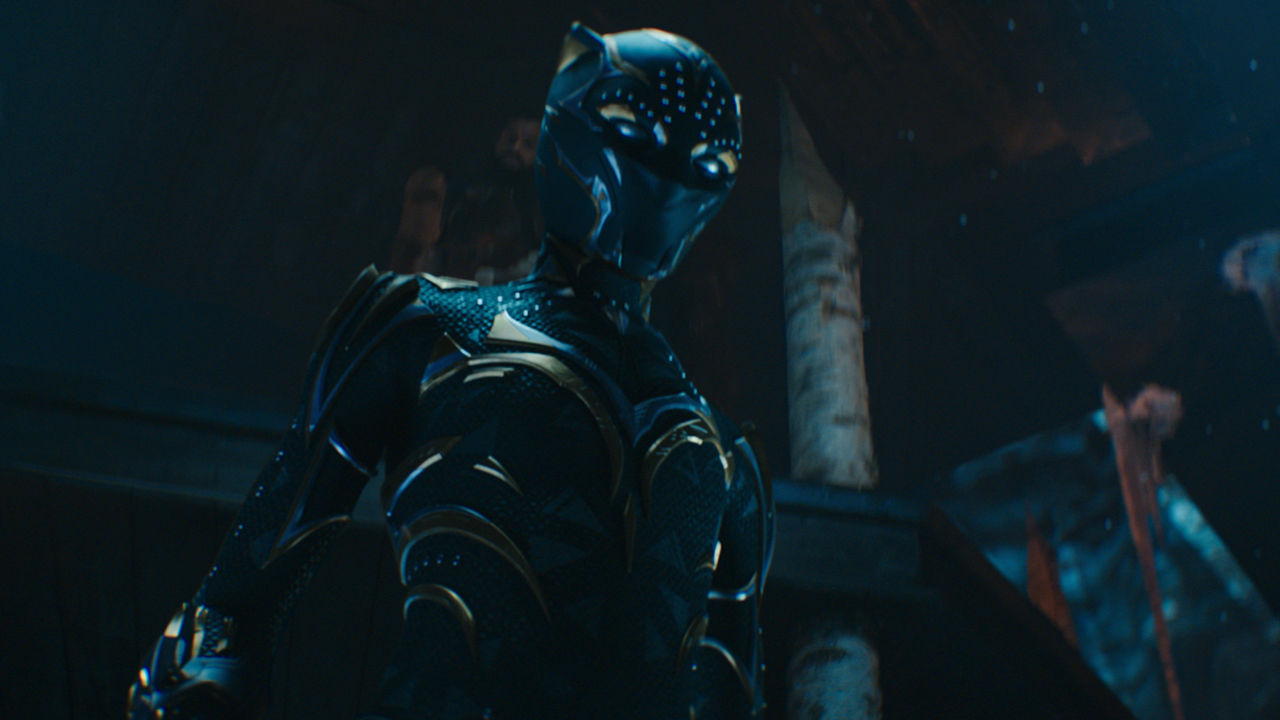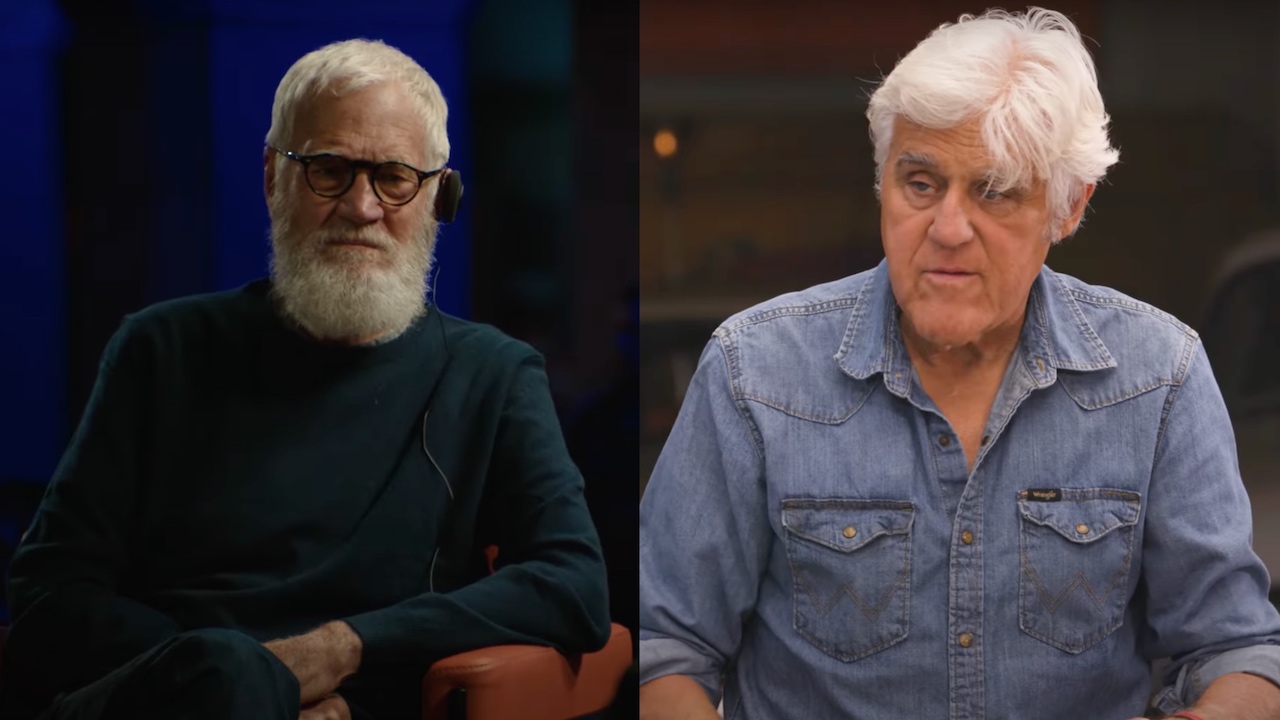The Most Embarrassing Statistics About Women In Hollywood
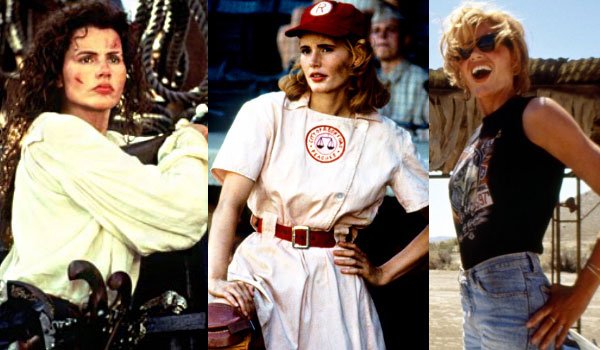
We've reported that female-fronted films have been a major hit with audiences, from Frozen to The Heat, Maleficent to The Hunger Games. But Geena Davis is reminding us all that despite audiences' clear interest in seeing stories about women, modern cinema is largely ignoring them.
As an actress, Geena Davis was a role model to young women with roles in such beloved classics like Thelma & Louise and A League of Their Own, and even the flopped (but fantastic) pirate adventure Cutthroat Island. Since then, Davis has become a role model of a different sort, founding the Geena Davis Institute of Gender In Media. This institute has recently released a study exploring gender bias in 120 films from the 11 countries, including the U.S., India, and the U.K. The results are shocking. We'll break down the most disturbing discoveries below.
Some details on the films that were a part of this study: the 10 foreign nations were selected were chosen because they were the most profitable film industries outside the U.S. The films examined were rated G, PG, or PG-13 (or the rough equivalent of those MPAA-based ratings) and were released between January 1st, 2010 and May 1st 2013. The reason for focusing on non-R-rated cinema is in line with the Geena Davis Institute of Gender In Media's findings that young girls need positive role models in media to help encourage them to greatness. Or put more simply as it is at their site See Jane, "If she can see it, she can be it."
Now onto the findings.
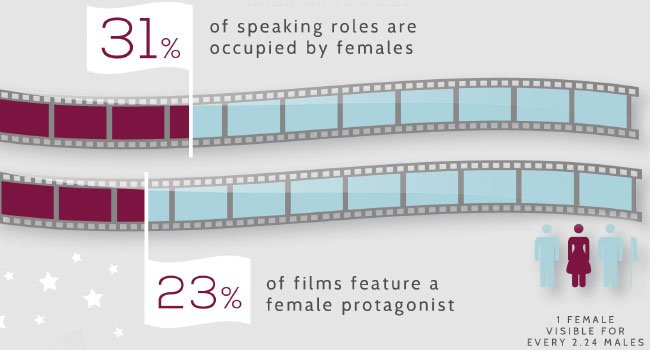
Images courtesy of SeeJane.org
Only 23% of films feature a female protagonist. If you pay attention to the onslaught of movie trailers and posters throughout the year, the first number is probably not too much of a surprise. Week after week, movies with male protagonists outnumber those with female protagonists. For instance, this week the only wide releases are The Equalizer and The Boxtrolls, both with male leads, and a female in a supporting role. Two weeks back was The Maze Runner, This Is Where I Leave You, A Walk Among The Tombstones, and Tusk--and only This is Where I Leave You could even argue for a female protagonist, though Tina Fey is more a supporting part of an ensemble there.
Only 31% of speaking roles are given to women. This statistic is downright depressing. Blame it on how women are largely kept out of the protagonist role, but it's shocking that 69% of speaking roles go to men. This would include under-five lines spoken by minor characters too. Meaning even bit parts like a crew member on the Enterprise who barks a status update, or doctor delivering a prognosis. These roles should hardly be dependent on gender, and yet it seems they are. Out of 5,799 speaking roles in 120 movies, only 1,798 went to women. The study also broke down these stats by nation. The U.S. only has 29.3% female characters, falling behind Australia, Russia, China, Germany, Korea, Brazil, and the U.K.
CINEMABLEND NEWSLETTER
Your Daily Blend of Entertainment News
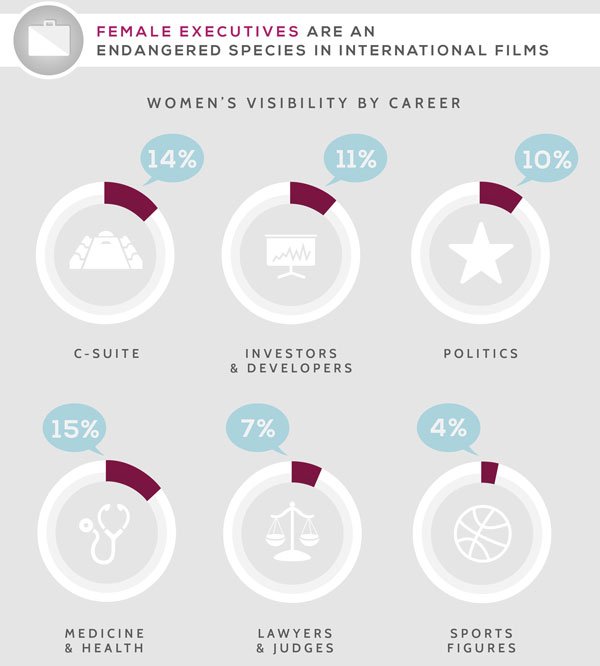
One female is visible for ever 2.24 males. Women are not only not heard, they are seen way less on screen than men. And this statistic feeds into a disturbing trend in how women are represented onscreen. Namely, in workplace environments, 78% of the characters shown are male. The study actually goes so far as to point out that women in positions of power in film are so rare they are "an endangered species." This is illustrated above, broken down by job sector.
When women are onscreen, they are far more likely to be eye candy than their male peers. According to the study, women are five times more likely to have their appearance commented on than men in movies are, as are twice as more likely to be shown scantily clad or nude. Remember, this is in movies rated G, PG, and PG-13. Imagine how these figures might look in movies where more than a bit of side-boob can be shown. Perhaps even more unnerving is how early on the sexualization of female character begins. The study found that girls as young as 13 are made sex objects, in fact 36% of teens in family-friendly movies are.
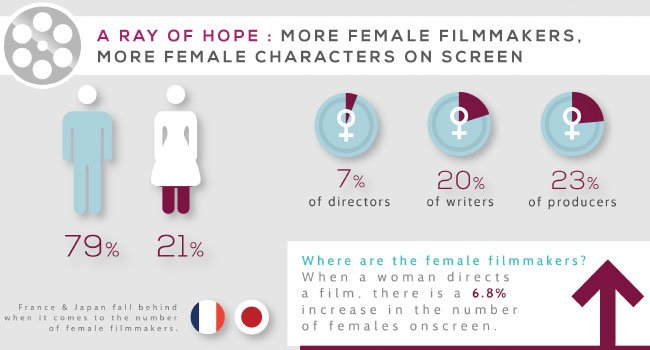
Women are minorities behind the scenes too. Some like to believe that Hollywood is a meritocracy where only the best ideas and the most talented people rise to the top. However, stories of institutionalized sexism challenge this idealist concept. And looking at the numbers of women working behind the scenes in Hollywood, it's naïve to pretend that this is all a matter of merit. Only 7% of directors in the observed films were female. Only 20% of the writers and 23% of the producers were women. Notably, films directed by a woman were more likely to have a women in their movie. This suggests that a rise in the amount of women given opportunities in film worldwide will spur a rise in the representation of women onscreen. But this is not something women alone should work toward, nor be responsible for.
Consider Emma Watson's UN campaign, He for She. Gender inequality may seem to only be a deficit to women, but in fact it hurts us all. It makes gender an element to success, and in doing so hurts the world by handicapping good ideas based on where they come from. We recently championed Marvel for overcoming stereotypical expectations of what many think interest women, and giving a devoted sci-fi lover Nicole Perlman a shot at developing Guardians of the Galaxy into what turned out to be a stupendous movie. That's an example of how we all benefit when gender discrimination is conquered. So we all need to demand it.
The study's findings end with a quote from Geena Davis:
"We can change what the future looks like. There are woefully few women CEOs in the world. But there can be lots of them in films. How do we encourage a lot more girls to pursue science, technology, and engineering careers? By casting droves of women in stem, politics, law and other professions today in movies."
To see the findings of the Geena Davis Institute of Gender In Media's study in an infographic, click to the next page. Click to enlarge.

You can read the full report here.
Staff writer at CinemaBlend.

